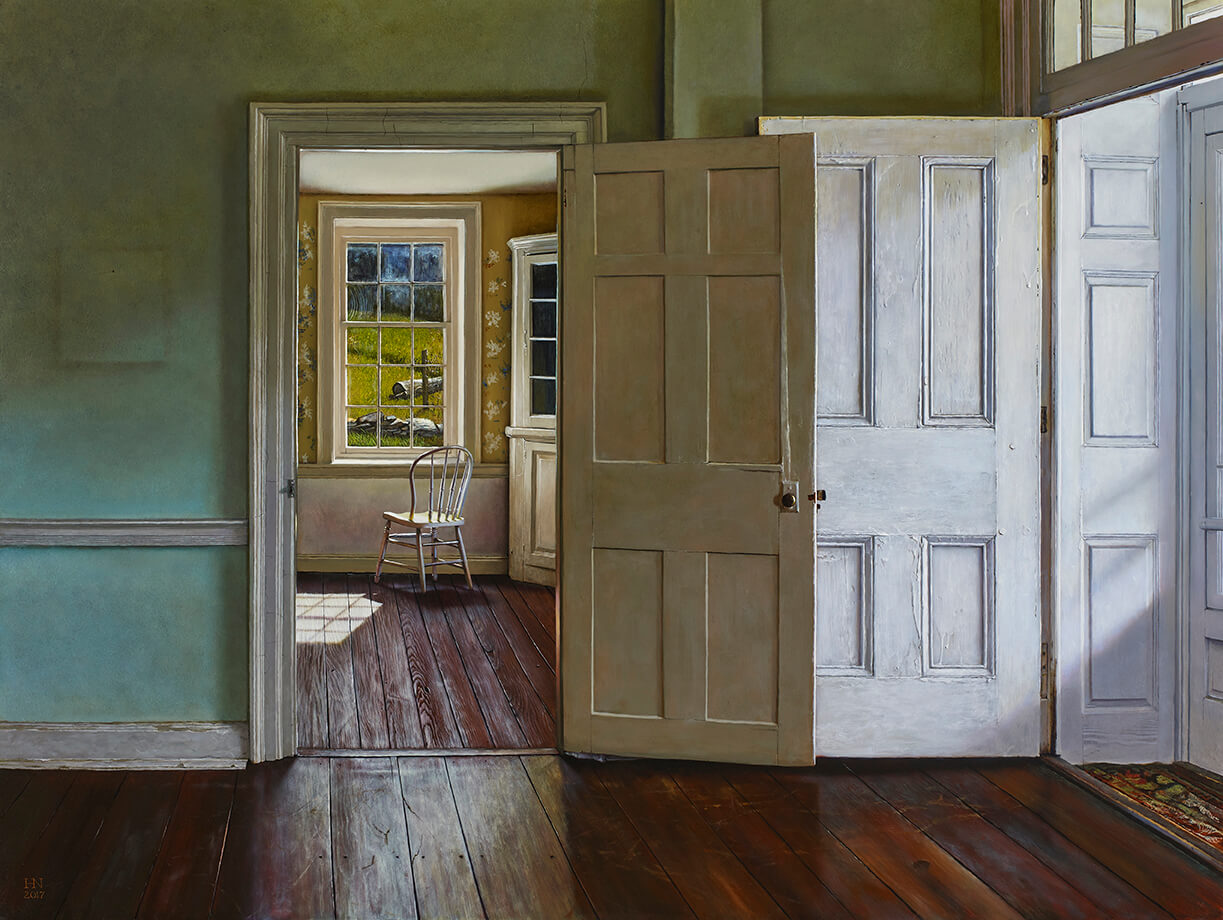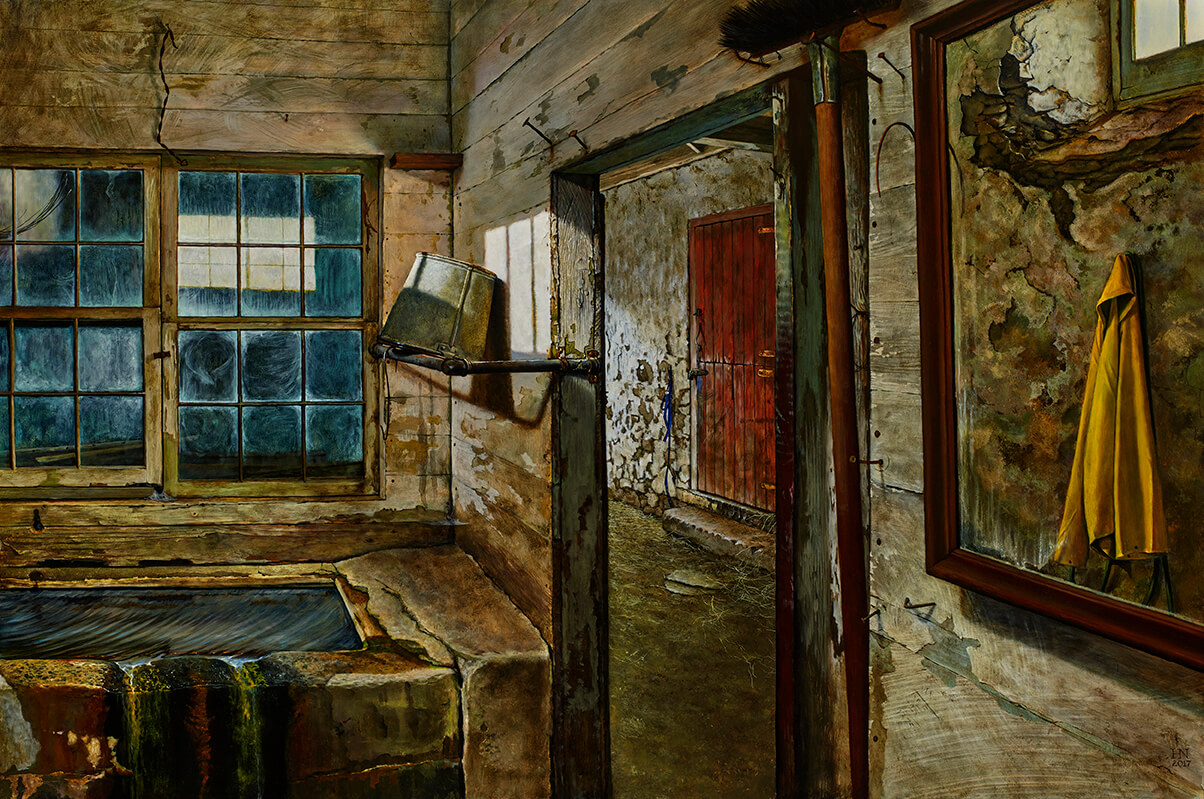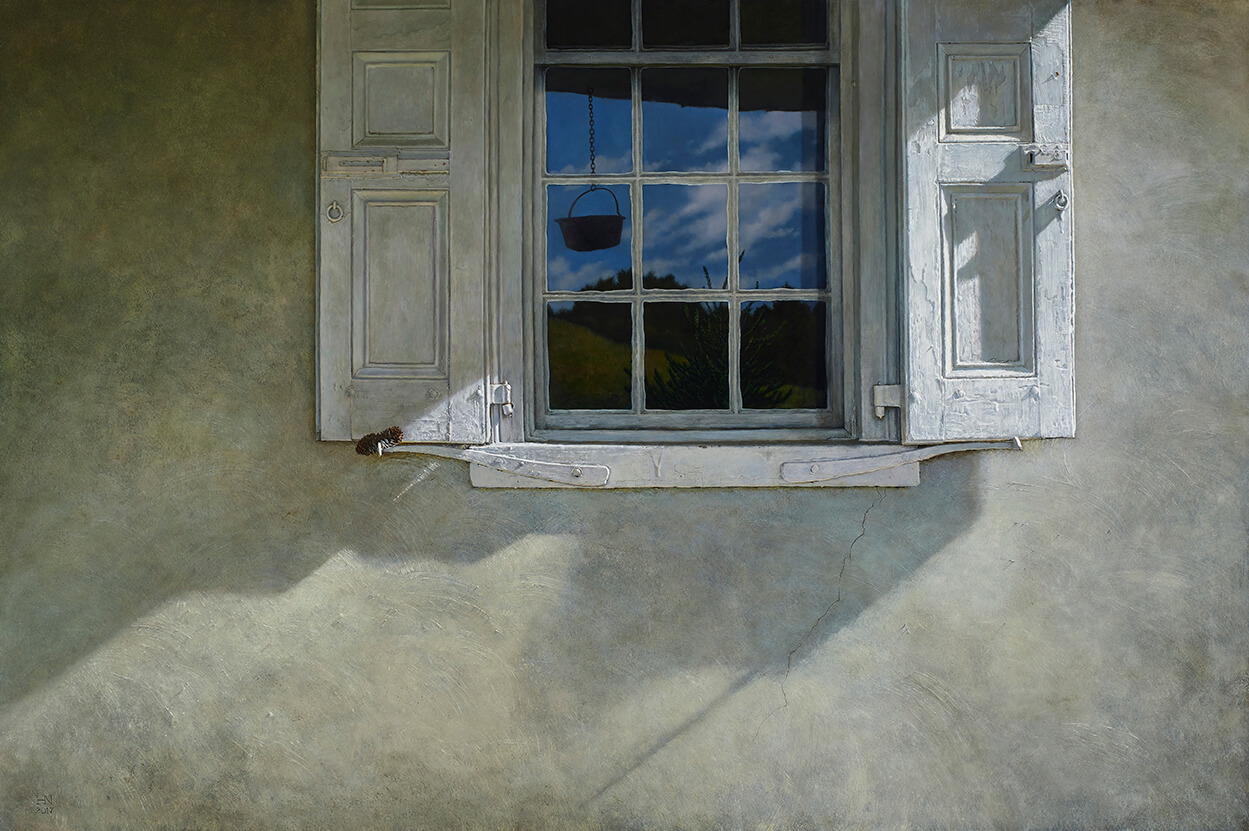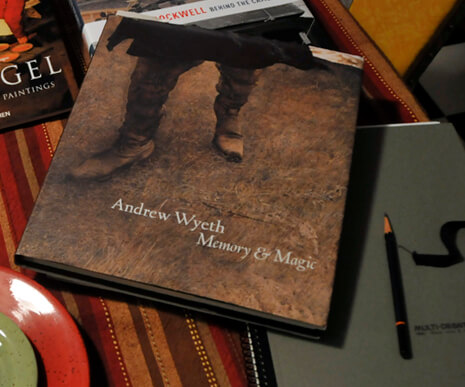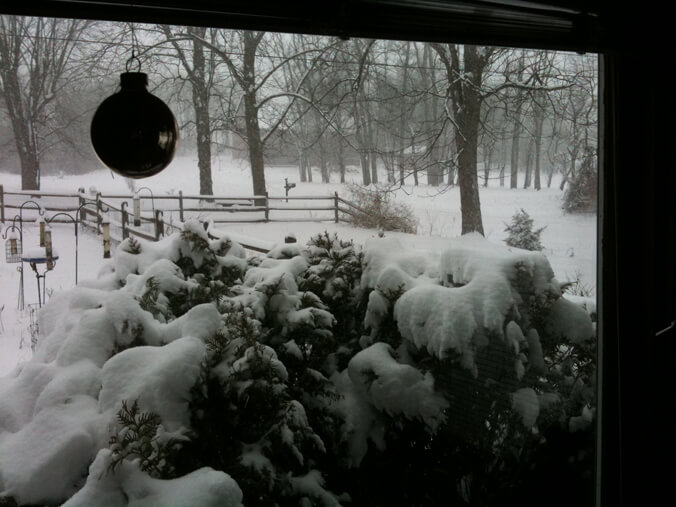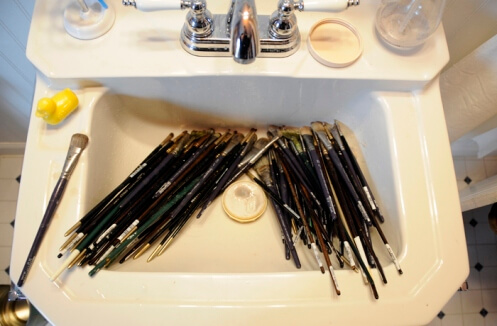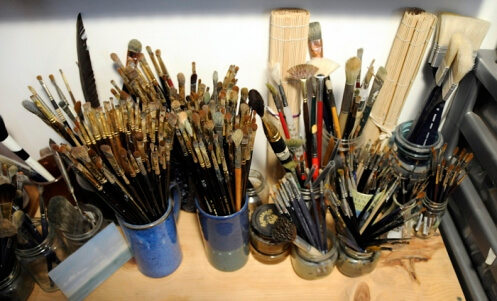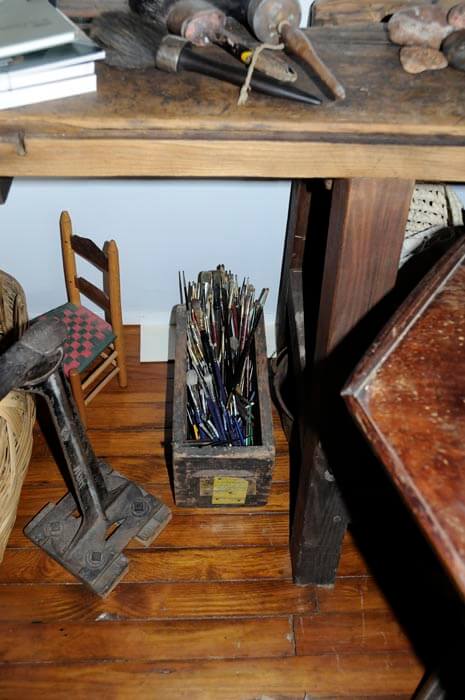“All poems…art, begin as a lump in the throat”
Louise Penny paraphrasing from a letter of Robert Frost’s
The long way home…
I’ve been on this planet for 60 years.
The first 11 were scattered about, but our family came to rest, for a slightly longer spell, when I turned 12 and we moved to Swarthmore, Pennsylvania. An oasis within the post war suburbs of newly poured concrete, it was a small town of cozy tree lined neighborhoods and Quaker sensibilities. It gave my teenage angst a comfortable cushion to flail about on, and a community of friends who helped me learn to trust.
And it gave me Jim Gainor…
The high school art teacher, who famously taught us to…”Paint the air and not the chair”, and who was a powerhouse of creative energy, and humor and light, and he is here, in this story, because he took me to the beginning…
It was the early 70’s, and all that free spirited flower power was echoed in the open-air curriculum at Swarthmore High, so why not throw a class of teenagers on a bus, and drive them a few miles west on Route 1 to the sleepy crossroads of Chadds Ford.
Mr. Gainor would send us out on our own to wander the fields and the farms and paint. I remember one afternoon in particular, when I collected water from the Brandywine Creek and perched on a hill and lost myself in the painting of a spring house. It was an awakening and, from this distance, I can see those youthful hands, holding a paintbrush, and know that is where the fire began to burn.
I knew that the Wyeth family lived and painted there. His paintings were well known in our household, and I found out recently, that Andrew had begun to secretly paint his young muse, Helga Testorf, around that same time. She would not have been much older than I was as she was helping to nurse and care for Andrew’s friend and muse, Karl Kuerner, who lived on the farm…just over that other hill.
My journey was soon to bend far away from those farm roads,
with many miles traveled over the ensuing decades, but…
Forty years after graduating from Jim Gainor’s lessons,
I once again found myself dropped off in the middle of Chadds Ford…
at the long tree lined entrance…
to Kuerner’s Farm.
The Brandywine River Museum was established in the old Hoffman’s grist mill at the crossroads of Chadds Ford…just about the time I was experimenting with those first watercolor strokes. It exhibits and archives the works of the many generations of Wyeth family artists.
The museum, under the Brandywine Conservancy, which works to preserve the local environment and it’s history, has since acquired the paternal Wyeth family home, where NC Wyeth lived and painted, Andrew’s studio, and The Kuerner Farm and has opened all three spaces for tours. The groups are small, with information provided by docents, who each offer a unique perspective and background about the working environs of the artists and their subject matters.
We have visited often, but last year I got an opportunity of a different sort.
The museum has opened the Kuerner Farm, for a few days each year, to a limited group of artists of any stripe. They call them Plein Air Days and they offer access to the farm and buildings for an entire day. Which is how I got to spend a glorious day last October…in my element.
My journal notes from that day, remind me that, back then, we were freshly off the boat from Ireland, a bucket list trip which had my mind seeing green and left my body racked for weeks with flu. I did more or less crawl there, but once we were set loose to roam…that fire, which had been kindled just a few hundred yards from the farm, but oh so many years ago…well it sparked once more… and I got straight to work.
About the farm, Andrew has said, “I didn’t think it a picturesque place. It just excited me, purely abstractly and purely emotionally.”
I understand that. They have done very little by way of renovation, the place still has the patina of working farm, and I have my own carpet bag full of emotional connections here, but on that quiet day in October, with visions of ancient ruins and wild Donegal fairies recently planted in my head, I came to experience the Kuerner Farm as a thin place.
Where the spirits of his paintings shimmer just above the surface of the dirt and dust in the barn, and float over the mill pond, and whisper through the pine boughs…
so…he’s there,
there are touchstones to his body of work from this farm everywhere you look,
which is after all… our way in…
and, however the arc of my life has circled me back, I was standing there, on a clear fall morning, with sketchbook in hand, as a mature artist, who has a dusty old toolbox of her own tricks, a few hours of daylight and time enough to find her own way in.
My first thought was to head in to the barn. The metal bucket still leans on the iron pipes in the spring room in the middle of what is the ground floor. I had seen it there before, and wanted to start there. Negotiating the dirt and hay strewn floor, I followed a few other artists into the maw of a cave that darkens by degrees as you walk deeper into the lowest level of the barn. The tiny room had a small light on inside, and a photographer. He had already set up a tripod and begun to work. He and that tripod were shoehorned in there and fixing to linger. So, I moved on.
I spent the next couple of hours just orienting my senses and studying the space and the light. My only goal was to listen. To be open to the muses. I kept my pencils and my camera quiet, and walked through the house, sat on the front porch, watched the two little goats playing behind the wired fencing, strolled up past the barn to the old carriage shed, watched as a red tailed hawk soared over the upper fields, and then I went back into that barn.
The space was empty, of humans, and, as I peeked around the door frame, I heard those pesky muses laughing. What had been a dull dusty space, was now alive with color from a high raking light. The old panes of window glass dividers had an eerie teal tint that glanced across the water, spilled down to the edge of the concrete basin and bloomed into a rainbow as it spilled in divided rivulets over and onto the cracked drain in the floor.
The sunlight somehow was angling back in through the opened barn doors and lit up what was left of the chipping red paint on each of the dutch stall doors. And, there was some kind of magical metal dance playing across the bucket. I was in.
Now I mentioned the closeness of the interior there, right. So, I was extremely cautious about my footing, and the proximity to an oil tank and some other machinery and bottles and the odd sharp metal bits. When my eyes had adjusted, and my camera shutter finger allowed that that light just might hang out a bit longer, I took a gingerly step to the right and looked back toward the doorway and saw that mirror. And the raincoat. And that was sorta fun.
It wasn’t until I got home,
and let all that dust settle,
that I saw the rough pencil lines
of the math equation
where Karl must have been keeping track of his herd
someday very very long ago.
Now, stay with me in that spring room.
And remember the gift of that raking light,
and turn around.
This is your next treasure.
It is here that I need to mention that I returned to the farm, on another of their plein air days, on a cloudy close weather day in May. I had captured this light back in October, but I was unsure of just exactly what that hanging metal contraption might have been used for. It had just the teensiest sinister edge about it’s countenance.
By that time I was already 6 months into the body of work that was becoming the Kuerner Farm series, and I had a list of questions to ask of the docent upon my return. First one… whatever was that used for. I had the good fortune to be spending the day with Melody, forgive my not having written down her last name please, who shared a wealth of details and background on everything from the rich family history to the architectural foibles and the names of the cats who own the place. But question one, well it stumped her.
Another good fortune, was that later in the day, Karl the third showed up. He is an accomplished artist in his own right, who runs workshops on the farm, and has carried forward a commitment, in conjunction with the Conservancy, to open the land up to other artists, allowing the creative inspirations to be accessible to future generations.
So Karl had come to drop off some donated cat food. And he knew exactly what that iron was for. His grandfather raised milk cows. The rig hanging in that room was attached at the top to a long iron carrying beam, which would have allowed the workers to sling a big old milking pail from the stalls directly across the barn, over to the cooling spring. Not so sinister after all. I fell completely in love with it at that point, and though the light on that day in May never reached the dramatic levels of October, the second visit gave me a chance to dig deeper, and to see the composition through new filters.
The cobalt blue…
it still makes me swoon.
In her letters, Willa Cather talks about a passage in her novel, The Professor’s House, where she had been describing the aging and depressed professor in his foreboding attic writing room, which he shared with his wife’s dour black clothed dress forms. She wrote that she wanted the transition to the next chapter, which takes place in the brilliant arid sun of the deserts of New Mexico, to rattle and transport the reader, as the professor would have experienced, after flinging open the tiny attic window to escape his despair, and go soaring into the brilliant warm light and openness of a freshening wave of freedom.
And, so we now step, dear reader, out of the rich peaty darkness of the barn…
and… turning back…
have to shade our eyes from the source of that raking light,
and what mystery is this.
The title for this painting is The Cardinal.
So let’s take a closer look.
When I first walked down the hill, from where we parked out back of that distant shed, I noticed the gate. I could do an entire series just of that gate. I spent a lot of time walking around it, this way and that, asking the gate, as master woodworker, George Nakashima was fond of asking a log…what might you want to become.
While I was carrying on that conversation, the cat, who I have come to know, from Karl, is named Lioness, was weaving through my legs and round and round the sketchbook, which I had leaning against that stone wall. I thought she was dear, but…the gate.
I approached and retreated from this composition a dozen times during the day to scope out how the changes in light angles, and shadow play, might bring out the best in that rust. On my final pass, coming in from behind it, I caught the tiniest glimpse of something red. Up close and personal…it turned out to be a cardinal feather. I brought it home in that envelope and let the muses play for a while.
It was their idea to let the hawk in.
I was rooting for the Lioness.
The first treasure I found, on that morning in May, was this tiny egg shell. It was white, but some shadow from the spruce trees gave it a faint teal glow.
It reminded me of the wash of paint in the main room of the farm house…so I started there.
The story goes that, when Karl the first lived there, the house was divided into two halves, in order to accommodate two families, or maybe the owner’s family and then the workers. Somewhere along the way, the central wall was removed, which left two fireplaces side by side.
Though the soft pastels are muted now, by years of hard living, their gentle hues reminded me of that chambered nautilus. You know the one. Betsy’s nightgown could have been used to paint these walls.
The shell is mine,
from an island far from these pillars,
but the shadows belong…ever…
to Anna.
Now turn around…
once more
You’ll know this kitchen.
and that ground hog day long ago.
The museum has done a marvelous job of recreating portions of the antiquated wallpaper pattern, which had been worn away over the years, but was revealed, anew, for the next generation, when they went to move that corner cupboard.
They also strove for verisimilitude by dragging a big old log out there, complete with fanged hinge.
What you can’t see is all the commotion behind that wall to the left.
A flurry of photographers had been camped out on that side of the kitchen all morning.
They were smitten by the chair, and the light, as was I. But their preferred angle of composition crammed them all into a small corner by the old kitchen stove. I don’t like crowds.
And I found this view to be pretty spectacular in it’s own right.
Even after one of those dodos walked into my shots,
and moved the chair a quarter turn to the left.
The force was strong in that room.
Now follow that bright white light coming from the transit,
and step through the screen door onto the wide front porch.
The first thing you don’t see is the spruce tree Karl planted to remind him of his boyhood days in the Black Forest of Germany.
When I first visited the farm, right after they opened it for tours, that tree was so large that it completely obscured the front of the house. When you stood on the porch back then, you couldn’t even see Kuerner’s hill.
The next time I was there, on that first plein air visit, I had made my way onto the porch, while I was waiting for that photographer to finish up in the spring room, The first thing I noticed was the bucket hanging from the gutter. Andrew painted it at least once that I remember, so it was another of those echoes, placed, or not, by the museum, or by Karl the third perhaps. No matter, it fits.
I sat myself on the stuccoed ledge opposite this window and took it all in.
It seemed to me that, if I had lived a good life… to borrow from my friend Follansbee, the sun might just cooperate and sweep over to the right in an hour or two, and cast some manner of interesting light play across those well weathered surfaces of paint.
I waited a long time. Sketched a bit. Rested my eyes. Listened. Hiked up to the truck for a snack. And back down. And there it was. A slow creeping at first, and then a full blown blast of light that would have made Rudolph weep. Full power.
So, I began to document at high speed. Thousands of shots, zooming in and out as first one paint drip cast a shadow, and then a different edge of framing snapped to attention. The reflections interested me and the dark shape in the lower right slowly resolved into a tree. I turned around to look again. Sure enough, there was a young tree planted right next to the giant stump of the old one. The new light was also coming to play on that spruce tree, outlining each needle, and the wind kept rearranging the branches so I that I would have lots to work with.
Then I felt something on my arm. A lady bug.
Then two more.
And on the nearby post…dozens.
They had arrived with the light, and were having a merry old time.
I knew at once that all would be well…it was Ted.
He had a special gift for me.
I focused back on the window…
and saw the pine cone.
Chills actually went along my shoulders.
The last remnant of Karl’s forest was tucked into the wing of the shutter hinge. When I took a closer look, there was the faintest trace of paint from the brush of whoever had most recently whitewashed the moulding.
Slayed, by a whisper of grace.
There were many moments like that.
Throughout the painting of this series, which I know now, is only about halfway completed.
These last few months have been hard, for most of us.
As November collapsed into December I felt psychologically, and spiritually threadbare.
It was a brutal time to show up in an art studio each day and try to connect in a creative way.
In the two months since that first October farm day, I had tried several times to find my way in to the reference work I had done “en plein air” . The work felt serious and intense, which echoed my mood, but I felt heavy and dark, which was the opposite counterpoint to the richly positive energy I had experienced while working there.
So, I carried on with other work, and re-read Louise Penny’s brilliant series of mysteries that take place in the fictional Canadian town of Three Pines. It’s a deeply honest, warmly sentimental, mischievously humorous place to hang out. All her readers harbor intense fantasies about living there. And boy, did I need to believe that a place like that might still exist right about then, even if it was only in storyland.
When I got up to her book, The Long Way Home, the challenges she had written for her characters felt very close to home. The artist, who had lost his way. The one whom he had left questioning hers. The intensity of their struggles, and the power of her prose…“Fear lives in the head. Courage in the heart. The job is to get from one to the other. And in between is the lump in the throat.”
“The poem – art – begins as a lump in the throat.”
I wrote those words down…
and got out my sketchbook from those days at Kuerner Farm…
and picked up a brush.
